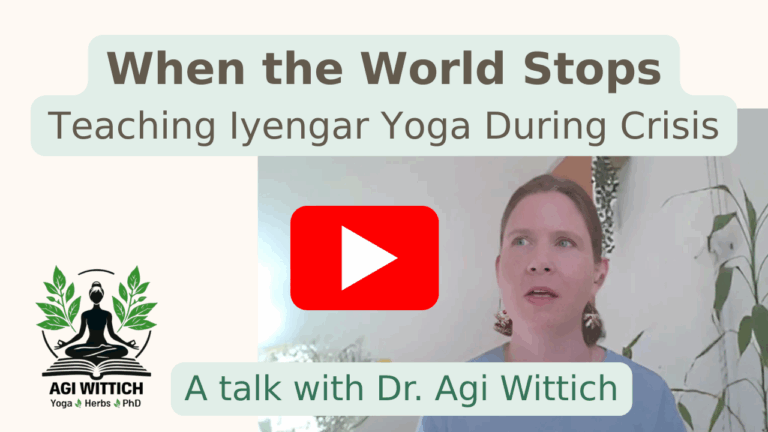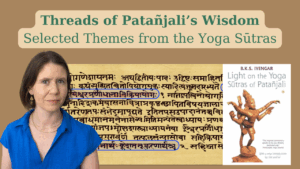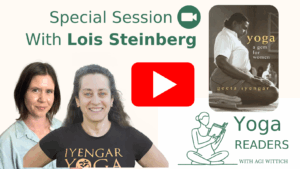
I recently had the oppo
rtunity to share my experience of teaching yoga during wartime, and the response has been overwhelming. People from around the world have reached out, wanting to understand how yoga can serve us when everything familiar collapses. When buses are exploding on the way to school, when air raid sirens interrupt yoga classes, when students arrive late because they had to make U-turns to avoid shooting incidents – what does yoga practice even mean?
Beyond the Mat: Yoga as Essential Medicine
My story reveals something profound about the nature of yoga that we often forget in our comfortable routines. For my students, yoga wasn’t a hobby to be abandoned during crisis – it was the difference between paralysis and movement, between suffocation and breath.
“All of my students said, this is the time we need yoga the most. Yoga is essential. Yoga is what helps us to live,” I shared. “Yoga is what connects me to myself.”
This experience taught me something I want to share with practitioners everywhere: How often do we treat yoga as something extra in our lives – like shopping or going to a café – rather than recognizing it as a fundamental tool for navigating life’s inevitable challenges?
The Wisdom of Adaptation
What I discovered during this time was how Iyengar yoga’s emphasis on adaptation became not just helpful, but lifesaving. I didn’t need to create a new “trauma yoga” program – I simply applied the core principles of Iyengar yoga: listening to students’ needs and adapting accordingly.
When students couldn’t lie down because it felt too vulnerable, we practiced standing poses against the wall for stability. When minds were too scattered for complex alignment instructions, classes focused on simple cues: “Feel your feet. Feel that you are standing.”
Reflective Question: How might your own practice need to adapt during different seasons of your life – whether you’re dealing with grief, anxiety, major life changes, or even just a particularly stressful week?
The Paradox of Strength and Vulnerability
One detail that particularly moves me to share is how I observed students who insisted they were “fine” – the 30-year-old who lost 50kg in a year but claimed everything was okay, the reserves who hadn’t slept in a year and a half, the wives of soldiers who found themselves yelling at their children out of helplessness.
“Whoever is injured and whoever went through something horrible, they always think about others that went through something more difficult than them, and therefore they feel just fine,” I observed. “And we have to work with that defensive mechanism, respect it, that they want to feel fine. And then through yoga they can slowly feel what is also not fine when they are ready.”
The Universal Nature of Uncertainty
“I always talk about fear in my classes. When you try to go up into Sirsasana, what do you feel? You’re going to die, but your head is on the floor. So what are you afraid of? You’re afraid to die. Now we meet this fear constantly in our practice. Now we meet it outside of the practice. Well, in practice we get the tools.”
This reframe of yoga practice as preparation for life’s inevitable uncertainties rather than escape from them feels revolutionary. Every time we hold a challenging pose, breathe through discomfort, or find stability in balance – we’re building capacity for the real challenges life will bring.
Practical Wisdom for Difficult Times
My approach during crisis offers practical guidance that I hope can help others:
Reflective Question: What would your practice look like if you prioritized showing up consistently over achieving perfect poses?
A Living Teaching
As I reflect on sharing this story, I’m struck by how it embodies the very teachings I try to pass on. When my teacher offered a Zoom class the day after October 7th and I said I couldn’t move or breathe, my mother told me, “You have to do it.” After 90 minutes of practice, I could breathe again. After the second class, my body could move.
This isn’t a story about yoga as a cure-all or spiritual bypassing. This is yoga as a practice of returning to the body, the breath, the present moment – even when (especially when) that present moment is difficult beyond imagination.
Questions for Your Own Practice
As you read this, I invite you to sit with these questions:
The Invitation
My story isn’t just about yoga during wartime – it’s about recognizing yoga as a fundamental life skill. It’s about understanding that the peace we cultivate on our mats isn’t separate from the chaos of the world, but preparation for engaging with it more skillfully.
As I shared in our conversation: “I can’t give you certainty and I cannot bring peace on earth, but maybe we can together find some peace of mind. And that’s already a lot.”
In a world that often feels like it’s spinning out of control, perhaps that’s exactly what we need – not escape from uncertainty, but tools for finding stability within it. Not the promise of external peace, but the cultivation of inner resilience.

A course of selected themes from the Yoga Sutras with Dr. Agi Wittich The Yoga Sūtras of Patañjali are the philosophical heart of yoga.

In a recent Yoga Readers session, Dr. Lois Steinberg opened her teaching archives and personal memories, sharing stories that span four decades of study
Agi Wittich is a yoga practitioner since two decades, and is a certified Iyengar Yoga teacher. Wittich studied Sanskrit and Tamil at the Hebrew University of Jerusalem, Israel, completing a PhD with a focus on Hinduism, Yoga, and Gender. She has published academic papers exploring topics such as Iyengar yoga and women, the effects of Western media on the image of yoga, and an analysis of the Thirumanthiram yoga text.